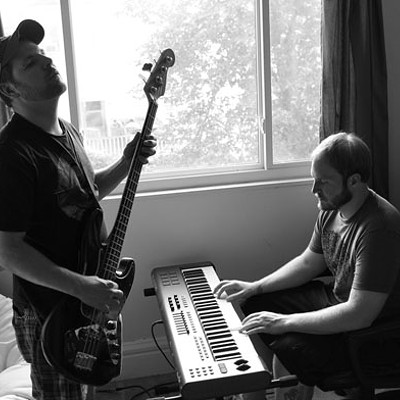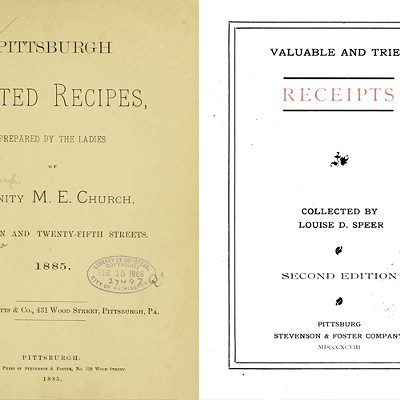Monday, August 15, 2011
High expectations and low ratings (so far) at WDUQ
2011 has been a tough year for jazz lovers. First, jazz-and-NPR station WDUQ was sold off by Duquesne University. Then the new owners, led by fellow public-radio broadcaster WYEP, decided to drop jazz from most of the line-up, replacing it with additional NPR and other news programming. Finally, days before the new format launched, insult was added to injury. Charlie Humphrey, a lead proponent for the NPR-heavy format, authored a Post-Gazette op-ed arguing that jazz fans were just a niche audience:
According to January 2010 Arbitron ratings ... WDUQ was ranked No. 5 among all local radio stations in the market during morning drive time, when NPR's Morning Edition is aired. During morning drive time, 90.5 is right up there with behemoths like WDVE and KDKA.
Now, what is WDUQ's ranking at 10 a.m., when jazz is in full swing? No. 15. You can practically hear radio receivers being turned off around Western Pennsylvania when jazz follows news and information.
So here's one for you, jazz fans:
WDUQ's Arbitron ratings for July, the first month with the new format, suggest that even more radio receievers are being turned off now.
Since June, WDUQ's "weekly cume" -- the number of listeners tuning in during the course of a week -- dropped from 146,200 people to 122,900. That's a decline of roughly 15.9 percent, the steepest of any local station pulling more than 100,000 listeners. As a result, WDUQ's overall ranking dropped from 15th to 18th in the local market.
And removing jazz from the line-up has, it seems, played a part in that decline.
In June ,when WDUQ was mostly airing jazz between 10 a.m. and 3 p.m., Arbitron numbers show the station had a "weekly cume" of 62,400 listeners aged 12 and over. In July, with no jazz on during that time, the cume has dropped to 45,800. WDUQ ranked 22nd in that time slot -- seven spots below the Jazz Era ranking Humphrey's op-ed bemoaned.
So is it time to start dusting off the Art Blakey albums? Not necessarily.
"An audience number drop was fully anticipated," says Lee Ferraro, general station manager of WYEP.
For starters, this is just one month of results, and when a format change takes place, the old audience is going to leave faster than the new audience catches on. Plus I'm reliably informed -- by City Paper's publisher, whose family owns two area radio stations -- that summer numbers can be especially unreliable. Holidays and vacations can alter listening habits.
What's more, Arbitron ratings are based on "portable people meters" (PPMs). These are devices that are worn by survey participants, and that record all the radio signals within earshot. So if you're in a dentist's waiting room with a lite FM station piped in, for example, you are counted as a "listener" to that station ... even if you'd rather have a root canal than hear it at all. And generally speaking, talk radio of any stripe gets less background use than, say, inoffensive jazz. Some of WDUQ's decline, in other words, may reflect a change not in our own listening choices, but in the choices made for us.
In a similar vein: People also generally don't listen to talk radio on at work. (Too distracting, too likely to aggravate a cubicle-mate who disagrees with the politics.)
Ferraro notes that the station has barely marketed itself yet, for the simple reason that it hasn't had time. The new WDUQ went on the air less than 6 months after its sale was announced. (Due to lags in the FCC approval process, the new station still doesn't have new call letters, which would complicate a marketing campaign.) By contrast, Ferraro says, a public radio station in Houston "took 14 months to do what we had to do in 5.5 months."
And while Ferraro didn't say whether a marketing campaign was in the offing, he added that the new format's program schedule "is generating a LOT of buzz and 'word of mouth.'"
It's gonna take a lot of mouths to live up to Ferraro's hopes. Just weeks ago, station executives were predicting that the new format would "shatter" WDUQ's old ratings. "We think the potential is there, if not to double the listenership, then to go over 200,000 to 225,000 listeners per week," Ferraro told the Tribune-Review. He did add, though, "It's not going to happen overnight. We hope to be there by fall."
Of course, a case can be made that ratings are a terrible means of judging the success of a non-commercial station:
Public radio should serve a broad swath of the public. But it can be a fine line between that and the market-driven logic that produces so much of the dreck on the rest of the radio dial.
For his part, Ferraro agrees that, "Public radio isn’t as much a ratings game as commercial since we don’t compete for advertisers." In any case, he says, the station's success will depend on "having an impact, engaging people [and] prompting dialgoue on issues among people, especially community leaders."
That said, he remains confident about the prospect for future audience growth. The station recently hired a program director, Tammy Terwelp,from Chicago's WBEZ, one of the strongest public-radio stations in the country.
"We do think the number of listeners will grow," Ferraro says. "[B]ut more importantly, we think the amount of listening to the station will nearly double within a couple years."
Of course, those two goals aren't the same: Mathetmatically speaking, you can double the amount of listening by keeping the same audience twice as long. Would the local market be better served by replacing die-hard jazz fans with die-hard NPR fans? Being a news snob myself, I think so. But I'm already on record as wondering whether the problem with journalism in this town is a lack of demand, rather than a lack of supply.
And in any case, if the numbers don't bounce back, I wouldn't fault jazz fans for feeling a bit of schadenfreude. Or for submitting a gloating op-ed piece to a newspaper someday.
Tags: Slag Heap










